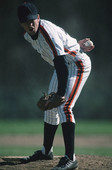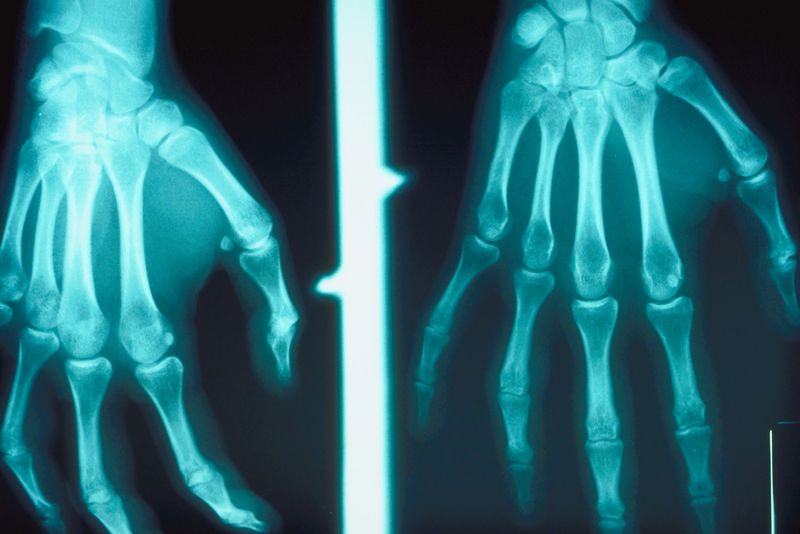
TUESDAY, March 11, 2014 (HealthDay News) — So-called “Tommy John” surgery is very effective at getting Major League Baseball (MLB) pitchers back in the game, new research has found.
Four out of five MLB pitchers who underwent Tommy John surgery to repair a torn elbow ligament eventually returned to play, and pitched as well as they had before their injury.
They even won more often after their surgery compared to players who never underwent the surgery, the study authors reported Tuesday at the annual meeting of the American Academy of Orthopaedic Surgeons (AAOS), in New Orleans.
“It used to be a career-ending injury. Today, it’s a one- or two-season-ending injury,” said Dr. William Levine, an AAOS spokesman and director of the sports medicine department of orthopedic surgery at NewYork-Presbyterian Hospital/Columbia University Medical Center.
Tommy John surgery fixes a torn ulnar collateral ligament, or UCL. The UCL is located on the inside of the elbow and connects the bone of the upper arm to a bone in the forearm.
This injury occurs in baseball mainly to pitchers, but it also can affect catchers due to the number of times they throw during a game, said Levine, who was not involved with the study.
“It’s a repetitive overuse trauma scenario. The torque on the elbow is phenomenally higher than the ligament can stand,” Levine said. He noted that the surrounding muscles and the players’ own technique are the only things that prevent even more torn UCLs from taking place. “It’s a mismatch of the force and energy that ligament sees versus what it can withstand,” he explained.
In the procedure, surgeons replace the injured UCL with a tendon taken from the player’s own body, usually either the forearm or the knee, Levine said.
The surgery is named after the first ball player to undergo the procedure, former Los Angeles Dodgers pitcher Tommy John. His surgery occurred in 1974.
In the study, doctors with Midwest Orthopaedics at Rush University Medical Center in Chicago scoured MLB records to identify pitchers who underwent Tommy John surgery between 1986 and 2012.
The researchers found 179 pitchers who underwent Tommy John surgery and looked at their performance. “We took their stats from before surgery and took their same data from after surgery, and compared them,” said study author Dr. Brandon Erickson, a resident with Midwest Orthopaedics at Rush.
They also compared the players to a group of pitchers who never received surgery.
Among their findings were the following:
- About 83 percent of the pitchers successfully returned to Major League play, and overall 97 percent returned to play in either the major or the minor leagues.
- Five pitchers receiving Tommy John surgery were never able to play again.
- About 4 percent of surgeries required revisions.
- Pitchers generally played better following Tommy John surgery. They allowed fewer walks and gave up fewer hits, runs and home runs. “Their pitching performance was declining due to their injury, and that’s why they had the surgery,” Erickson said. However, pitchers also played in fewer innings following surgery.
- Pitchers who underwent the surgery appeared to play better than the comparison group of pitchers who didn’t need Tommy John reconstruction. They walked fewer batters and gave up fewer hits per inning.
The study was published recently in the American Journal of Sports Medicine.
“The surgery is not 100 percent,” Levine said. “But if you’re a major league ball pitcher and you do have to have the surgery, knowing that 83 percent of your colleagues are able to get back to their previous level of performance is encouraging.”
However, both Erickson and Levine expressed concern that these findings might encourage younger players at the high school or college level to undergo Tommy John surgery in the mistaken belief that it could improve their game.
“If you are a college, junior high or high school player and you have to have Tommy John surgery before you get to the major leagues, it does not improve your chances of eventually getting to the major leagues,” Levine said. “It doesn’t make you stronger, better or faster. But if you have the talent to be in the major leagues as a pitcher and you tear your elbow ligament, we can say pretty conclusively there is a high rate of return to pitching at the previous level.”
Erickson added that these players excelled because they did a good job in physical rehabilitation before returning to the game.
“They rested and made sure they were healthy before they returned,” he said.
More information
For more about Tommy John surgery, visit Oregon Health & Science University.
Copyright © 2025 HealthDay. All rights reserved.

